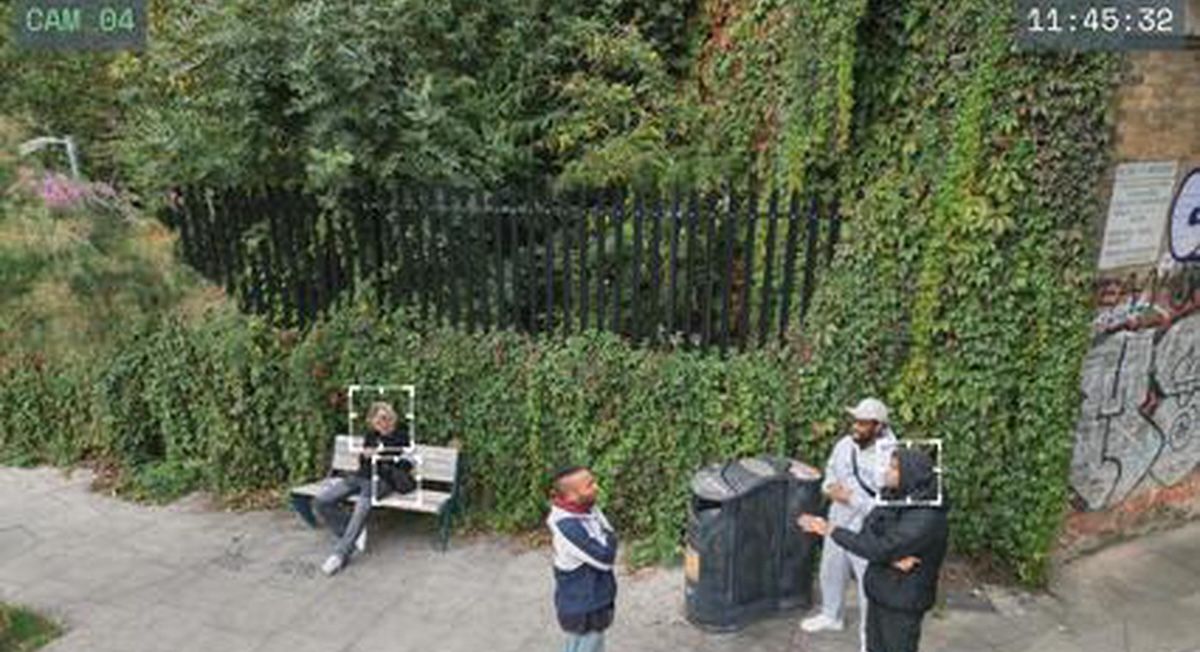Panoptic Surveillance is No Panacea
Marwa Sayed / May 23, 2024
Image by Comuzi / © BBC / Better Images of AI / Surveillance View B / CC-BY 4.0
Pick your nose in the back of a rideshare. Smile for the camera! Trying to hide the fact that you ordered Taco Bell for the third night in a row by putting the trash in the bin on the corner of your street. There’s a camera there too. At the racetrack, when you should be at work. You guessed it—you’re on camera.
These seemingly absurd and invasive scenarios will likely come true if legislators have their way. A bill proposed in the New York state legislature would force drivers of for-hire vehicles to install rear-facing cameras in their cars and vans, whether they want to or not. Another bill introduced in the New York City Council would require the Department of Sanitation to install surveillance cameras to identify people putting household trash in public litter baskets. A third bill in the New York state legislature would mandate surveillance cameras at racetracks to "monitor human and equine traffic." Legislators seem to have decided that the cure to what ails us is a veritable panopticon of cameras that spares no one and reaches further and further into our private lives.
As the ubiquity of cameras grows, so do the harms. Research shows that surveillance and the feeling it creates of constantly being watched leads to anxiety and paranoia. People may start to feel there is no point to personal privacy because you’ll be watched wherever you go. It makes us wary about taking risks and dampens our ability to interact with one another as social creatures. If we know our interactions and activities are being closely scrutinized, we are less likely to show up authentically as ourselves and instead conform to what we believe the dominant norms to be.
Beyond harms to mental health and our social lives, surveillance has serious racial harms that put Black people and other people of color at heightened risk. An Amnesty International study found that video surveillance using facial recognition technology was distributed unequally in NYC and that “the higher the proportion of non-white residents, the higher the concentration of facial recognition compatible CCTV cameras.”
Professor Simone Brown at the University of Texas at Austin further details the racial harms resulting from surveillance, arguing that every iteration of surveillance technology has been used to objectify, categorize, and repress Black people. While advances in surveillance technology may be billed as increasing accuracy or being targeted towards a specific purpose, they increase Black people and people of color’s exposure to harm by providing more information—that is not guaranteed to be accurate—to law enforcement. For example, facial recognition technology has trouble telling Black people apart, leading to numerous instances of wrongful arrest.
Increasing the number of cameras also harms our social liberties, providing law enforcement with an increasingly unfettered amount of access to footage that would otherwise not have been available to them. Take legislation that uses cameras to combat "illegal dumping." Nothing in that bill limits the retention or use of that footage, giving the NYPD and other law enforcement agencies unfettered access and thereby chilling the right to protest or potentially making it harder for out-of-state people to access reproductive healthcare for fear of being recorded. Why should we feed systems we know are biased and inaccurate when they should be discontinued instead?
Worse, cameras often don’t even stop the conduct they are installed to monitor. There is little to no data showing that tools like Ring cameras help solve or deter crime. Even London, with its ever-present CCTV network, has not been able to demonstrate a reduction in crime due to the usage of cameras. Body cameras worn by correctional officers don’t protect prisoners when they can be turned off and the footage edited. Many of the issues surveillance cameras seek to address are the result of larger systemic issues that are not solvable with a technological fix. Crime results from a number of factors, including inequality and deprivation and a lack of mental health and substance use treatment options—cameras don’t do anything to address these issues. Ensuring prisoners’ safety requires more than an officer with a body-worn camera and would require us to break down the prison industrial complex—something legislators are unwilling to do.
The panopticon is upon us, making us all more anxious and less safe. Instead of spending billions of dollars on ineffective surveillance tech snake oil, we should invest in solving the fundamental problems of our society.
Authors
